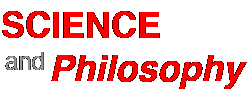Reading on: Neuroscience and self
Churchland, Patricia Smith Brain-Wise: Studies in Neurophilosophy The MIT Press, Cambridge, MA 2002 [abridged – 1190 words] – the construction of a self-concept
Evolutionary biology suggests a very general answer to the question of why brains might construct a se1f-concept: it plays a role in the neuronal organization used to coordinate movement with needs, perceptions, and memories. Such coordination is essential to an animal’s survival and well-being. Coordination of functions ensures that inconsistent behaviors — fleeing and feeding, for example — are not attempted at the same time. It ensures that a hungry animal does not eat itself. For organisms with high-level cognition, self-representational capacities constructed on the more fundamental platform help us to think about the future, make useful plans, and organize knowledge.
Still, these terms are very general, and much more detail is required to explain how brains work so that I can reflect on my motives, imagine myself swimming, remember myself riding a bicycle, fall into deep sleep during which my conscious sense of self vanishes, dream about flying, and wake up knowing who I am. Much of the detail remains to be discovered, though what is known so far permits us to sketch a basic framework for entertaining some reasonable answers. It is also enough to allow us to design experiments that may unearth more detailed answers concerning how the brain generates the I that I am.
In specifying the range of self phenomena to be addressed by neurobiology, it may be useful first to consider how we routinely conceptualize the self. In the ground-clearing stages of our inquiry, determining what we believe about the self by examining what we say about the self is a probe into the role of self concepts in “coherencing” our inner life. How much of what we believe is true is, of course, a distinct, empirical matter.
Frequently we use “self” to mean body, as in “I cut myself” and “I weighed myself”; on other occasions, we mean to distinguish self from body, as when you are exhorted, for example, to “talk to yourself.” This ambiguity in the word “self” rarely causes misunderstandings, since we share rich background knowledge concerning when the word “self” does and does not refer to the body.
In conversation about the self, metaphors are the standby. Sometimes we use object metaphors, as when we say we pushed ourselves to finish, pulled ourselves together, fell apart, or tied ourselves in a knot. On the other hand, when we say “I annoyed myself” or “I deceived myself” or “I talk to myself,” the person metaphor is invoked.’
Using the self-as-person metaphor, people commonly describe themselves in terms of a cluster of selves, such as one’s good self and bad self, one’s shy self and extrovert self, or one’s social and private selves, all of which are selves belonging to “me.” My good self and my bad self are sometimes conceived of as parts of the one thing, myself; sometimes as two persons in a group of many. One may bemoan losing control of oneself or of being controlled by one’s superego.
In describing character traits, one may refer to one’s real self, which one can consider as hidden or revealed or transformed or inaccessible. What one considers one’s real self is partly a cultural and a conventional matter, though only partly. We do not usually talk about our “unreal self,” though we do admit to masking or covering our true selves. Sometimes the self is conceived of as a project, for example, when we undertake self-improvement or self-discipline. Sometimes one’s self is analogized as a process, such as becoming mature or wise.
Thus juxtaposed, these commonplace metaphors are strikingly diverse. What the metaphorical language suggests is that the self is not a thoroughly coherent, single, unified representational scheme about which we have thoroughly coherent, unified beliefs. Rather, the self is something like a squadron of capacities flying in loose formation. Depending on context, it is one or another of these capacities, or their exercise, to which we refer when we speak of the self
Self as agent
The key to figuring out how a brain builds representations of “me” lies in the fact that first and foremost, animals are in the moving business; they feed, flee, fight, and reproduce by moving their body parts in accord with bodily needs. This modus vivendi is strikingly different from that of plants, which take life as it comes. If an animal’s behavior is haphazard or incoherent, the animal tends not to live long enough to reproduce. Consequently, an overarching demand on any nervous system is that it appropriately coordinate the body: its movable parts, its needs, its stored information, and its incoming signals. This demand is a powerful constraint on the evolution of neural organization.
Swimming or running, swallowing food or building a nest, stalking prey or hiding from predators — smooth performance of any of these activities requires tightly timed coordination of spatially dispersed muscle cells. Sometimes the coordination must extend over long time periods, as in stalking and hiding. Sometimes it can be handled by a reflex, such as ducking when a projectile approaches your head. Because individual muscles move at the behest of motor neurons, motor-neuron activity must be appropriately orchestrated. But to serve survival, behavior must also be coherent relative to the animal’s needs (don’t feed if you should flee), suitable to current given sensory signals (the berries are too green to eat), and appropriate in view of relevant past expenence (porcupines should be avoided; cover bee stings with mud).
Coordination can only be performed by neurons, since there is no intelligent, extraneuronal “mini-me” inside who puts it all together. The intelligence of the system has to emerge out of the patterns of neuronal connectivity, the response properties of particular types of neurons, the activity-dependent modifiability of neurons (learning), and a neuronal reward system for strengthening neuronal connectivity when things go well and weakening connectivity when they go awry. Given this very broad construal of coordination, this problem, one might say, just is the problem of how the brain works.
By making some effects pleasant and some not, the nervous system directs the animal’s choices. Emotions are the brain’s way of making us do and pay attention to certain things. That is, they are assignments of value that direct us one way rather than another, and they seem to have a role in every aspect of self-representation, and certainly in body representation. Brief periods of oxygen deprivation give rise to overwhelming feelings of needing air; extreme hunger and thirst can make us feel so desperate as to banish all thought of anything but water and food. Satisfaction is felt after feeding, sex, and successful predator avoidance. More generally, self-preservation is underpinned by powerful feelings.
As neuroscientists have emphasized, this part of the system probably plays a role not only in emergency situations, but also in providing assignments of hedonic value in more humdrum categorizations, as when objects and events are classed as desirable, nasty, familiar, novel, safe, dangerous, and what have you. If you come into a shed and encounter a nasty smell, it will be recognized first and fundamentally as dangerous, as the basic fear circuits respond, well before the cognitive niceties get deployed and long before “cool” reason kicks in for impulse control.


